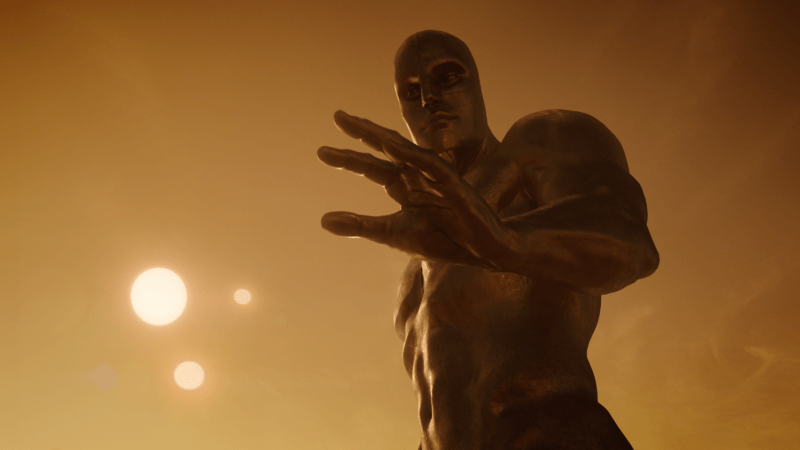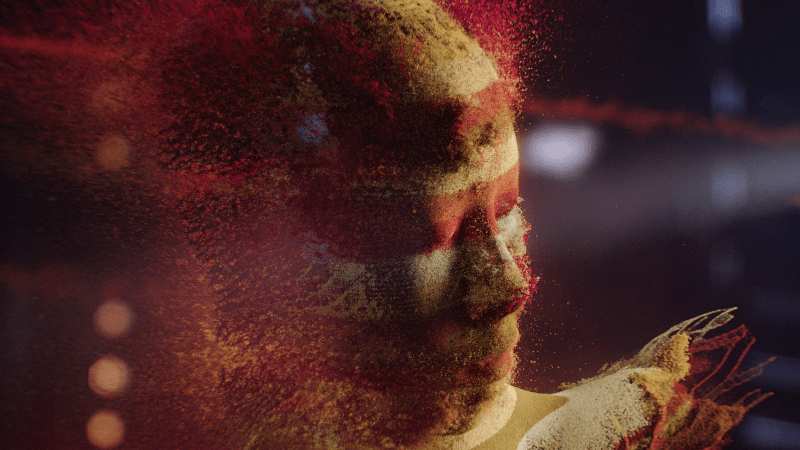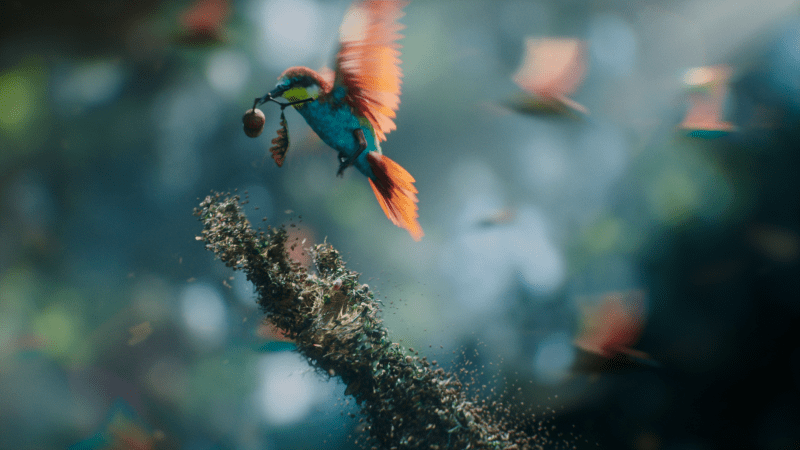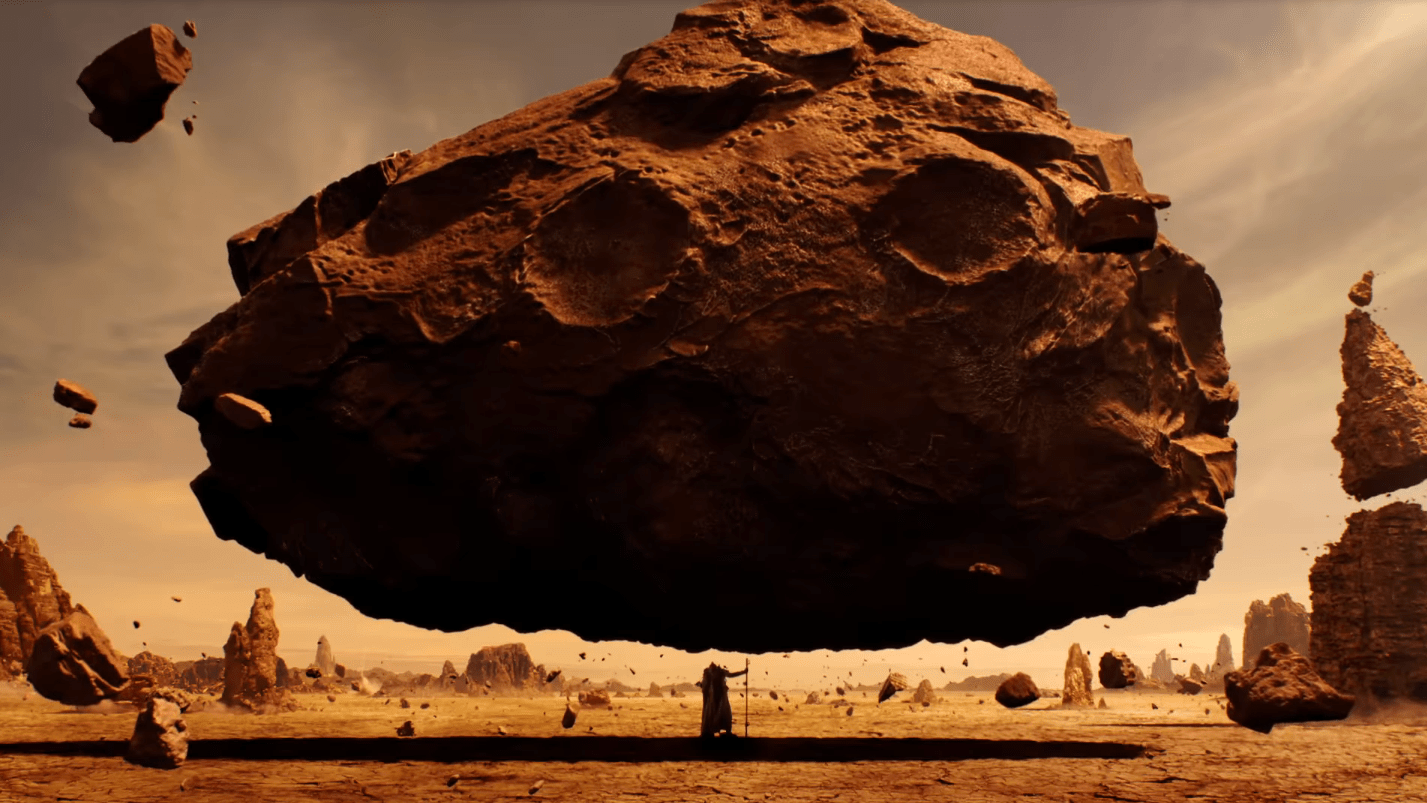There are many notes of taste in the glass of Hennessy XO. Spices play a very important role for the whiskey brand and therefore when MPC was picked to compose the distinct visuals with Sir Ridley Scott, they were ready and primed for the challenge. This was Scott’s first TVC in nearly 20 years.
RSA Films, DDB Paris and MPC produced more than a TV commercial. This is a gorgeous short film, another cinematic experience, unlike any others. But, the market for a luxury consumable has a drawcard for high-end visuals. There are seven distinct sections in the spot, each with a ‘flavour’ all its own.
Play the TVC now (below), and read on.
The ‘Seven Worlds’ are creative interpretations of each tasting note described by Hennessy’s Comité de Dégustation as illustrations of Hennessy XO’s taste and feel: Sweet Notes, Rising Heat, Spicy Edge, Flowing Flame, Chocolate Lull, Wood Crunches. Culminating in Infinite Echo. MPC’s Carsten Keller, the Head of CG on the project took up the story when I contacted him in London.
He tells me the floating Sweet Notes golden orbs of honey on the first sequence had great references to work from. A light syrup was striped with metallic shiny material to accentuate a honey viciousness. “We used a real substance on set to achieve the bowl shots in camera,” says Keller. “Ridley had a clear idea how the liquids had to behave and look, so our task on that particular sequence was to make the substance float magically in the air and transform them out of the main substance.” This was achieved in Houdini and rendered in Mantra. “On top of the liquids, we also had to get their caustic effects on the walls to embed them better in the real world.”

The Rising Heat sequence was a massive visual challenge. MPC originally used real people as models and made them look like massive giants interacting with the sand on set. “However, the scale just didn’t look believable via the live-action route. We quickly realized that we had to create CG giants interacting with CG sand,” said Keller. “This put a lot of pressure on the CG team as we had to come up with the entire world from scratch. That’s skies, mood, lighting, sand, giants and even the dust devils and twisters. With their drawings and concept images, Ridley and his production designer Marc Homes played a huge role in bringing these scenes to life and helped us understand what this world was made of.”
All the dunes and plains were modelled in Maya and later transferred completely into Houdini in order to simulate the sand. the dust devils, the wind and sand storms. “One of the most challenging shots was the giant foot landing right in front of us with all the sand displacement as well as the end shot where we see the giants marching towards us,” said Keller. “Here the animators had the challenge of making them appear massive in relation to the wide landscape. Once again, Ridley helped so much in making this shot epic by drawing this scene for us and even implementing the huge 50km high volcano in the distance.”
Ridley Scott had the idea in the Spicy Edge sequence to generate an artificial human out of streams of spices and powder. He was very specific and drew many storyboard illustrations during his meetings with MPC. “His original drawings showed beautiful flowing bands of particles forming together like a 3D printing process building the AI layer by layer,” says Keller. This sequence took a very long time as it was done entirely in CG. The most complex task was to transform Ridley’s drawings and come up with many different ideas of how the particles could form the face and other parts of the body. “We basically had an entire team of Houdini FX artists coming up with lots of different motion concepts that we presented to Ridley once or twice a week to narrow down how the effect could work throughout the sequence,” explains Keller. Another challenge was to find good camera angles and come up with a narrative that kept the interest high and didn’t make the effect look repetitive. “In the end, the particles still had to interact with the actor that we used on set. By that time we decided it was better to replace her completely in CG to make the effect more believable and to keep the overall look consistent,” he added.

In most of the sequences in this Hennessy TVC, MPC went straight into Houdini because it so heavily effects driven. Keller says the brief for IV Flowing Flame was to create a mesmerizing world of heat and fire so the entire atmosphere and clouds had to look incredibly hot, dangerous and as if they were constantly on fire. “Our concept artists came up with some stunning drawings of a world that was inspired by the beauty and sheer size of a volcanic eruption with all its billowing clouds. The key ingredient for success here was to have the concept artists constantly collaborate with the effects artists and lighting team in order to steer them in the right direction.”
V Chocolate Lull and Rising Heat had one challenging thing in common. MPC had to integrate studio-lit people into a completely fantastical, yet photoreal environment. MPC’s own concept designers and the production designer from RSA Films, Marc Homes, worked closely together for several weeks to find the right tones for this world. “One of the biggest hurdles to overcome was the ever-changing time of the day,” describes Keller.
“Within a few seconds, we follow our desert walker from a beautiful night sky full of stars and planets to midday lit landscape with floating rocks everywhere. Our original idea to only use one massive digital matte painting strip in the background flew out the window.” Almost every shot had to be hand painted and populated with a vast array of floating rocks modelled by a big MPC modelling team in their Bangalore studio. In terms of compositing, this was one of the most complex tasks as they had to integrate real studio footage with CG elements and painted backgrounds without it looking like a theatre set.

If the original idea is really strong from the beginning and the narrative is there, the CG will follow suit. Ridley Scott’s vision was to create a mystical creature made out of leaves and twigs whose journey is then followed – basically becoming the ‘gardener’ of the forests. “The Wood Crunches sequence was fantastic to work on,” admits Keller. “One of the key moments in the entire commercial is when one of the bee-eater birds plants a little acorn in the gardener’s hands and he seeds it into the soil. We still don’t know what is going on, but shortly after, a mass of birds form a magical cocoon around him only to reveal that our wood creature has transformed himself into a beautiful young oak tree.”
“When you hear the story and go through the storyboards you become very excited and lots of our artists wanted to work on this sequence as it’s something we haven’t created before – especially in advertising. We tackled the task exactly like the Spicy Edge sequence. After the concept work, we had to come up with lots of different motion concepts – that wouldn’t take longer than a day or two to develop just to show how the creature would react and how the leaves and soil would flow and behave.”
Within several days, there were quite a lot of different ideas on the table that Ridley Scott could choose from. One of the biggest learning curves was to find the right balance between the magical flow of the thousands of pieces he is made of – and his choreography. If the internal pieces moved too fast they would compete with the readability of the dance – which was originally performed on set with a professional dancer in an XSens suit. Later on, it was decided to alter the animation and the speed of the dance. So the motion capture data was abandoned and they shifted to traditional animation instead.

“Besides this creature, the bee-eater bird was another hero that had to be created for the hand close up shot. We groomed the bird with our propriety Houdini feather tool in around three weeks and then forked off a lightweight version for the hundreds of birds that circulate our main creature. All our software development and learnings from previous projects such as the Samsung Ostrich or the John Lewis Penguin paid a lot of dividends in the making of the bee-eater for this project.”
“We originally started off with various different approaches for the VII Infinite Echo scene, including a zero cut fly through of all the planets and nebulas, but we then realised it had been done before. As a result, we ended up with a pull-back cut approach where we pull out of the galaxy, planet by planet, to reveal the final product. That approach worked really well as we could concentrate on each planet in much more detail and could also use a CG/DMP approach which was the key to success. A non-stop fly-over would have meant that we had to model and lookdev every small detail on those planets. Starting off with concepts for each planet, then pushing it heavy in DMP via Photoshop and mixing it with CG elements such as clouds, gases, and nebulas, in the end, to bring life into it proved to be the most efficient workflow. The nebula God started in a similar fashion. First we pursued a full CG gas approach via Houdini but then followed suit with our DMP approach and adding lots of elements in CG and 2D.”
This campaign was released and played during February’s Oscar campaign, and although it is a far cry from cinematic work with MPC on the original Alien, The Martian and Blade Runner in terms of genre, the brief was of course to create something truly different. “But even if our wildest dream, we did not imagine we would be going to so many incredible new worlds,” said Alexander Kalchev, executive creative director at DDB Paris.
Related links:
© Paul Hellard – VFXScience/Hellard Media 2019
